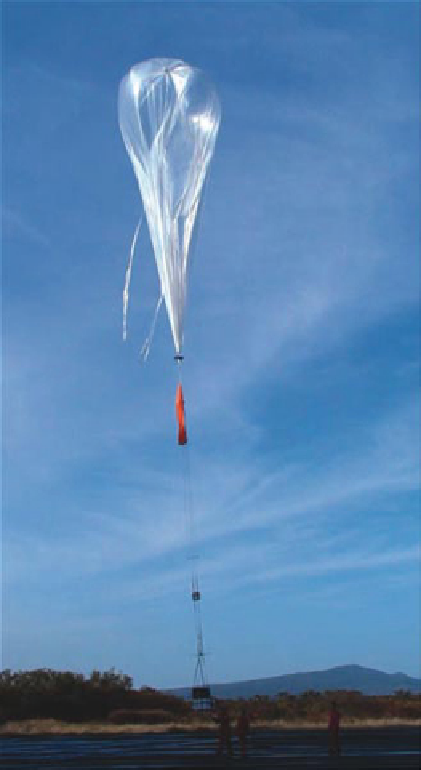Environmental Engineering Reference
In-Depth Information
Figure 12-7.
A weather balloon used for making soundings in the atmosphere.
Source:
National
Oceanic and Atmospheric Administration (NOAA).
are at 1000, 925, 850, and 700 mb, which span the vertical profile from near sea level
to roughly 3000 m. In addition, there are several fixed altitudes where wind speed and
direction data are required to be reported (8).
Rawinsondes also have disadvantages. There are far fewer rawinsonde stations than
surface stations, meaning the nearest rawinsonde station is often much farther away
from the project site than the nearest surface station. In addition, the balloons are
launched only twice a day, at 12 PM and at midnight Universal Coordinated Time,
or UTC (also known as
Greenwich Mean Time
); these days, some weather balloons
are launched four times a day, but this practice is relatively recent, and thus, the
two extra observations must usually be discarded to ensure a homogeneous long-term












Search WWH ::

Custom Search